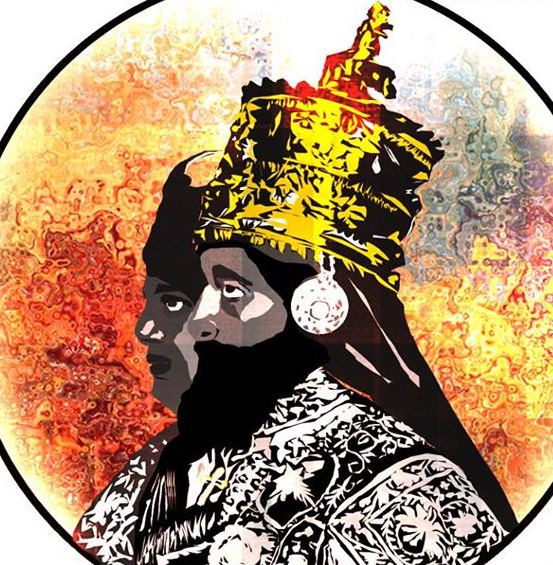Greetings in the name of His & Her Imperial Majesties Qedamawi Haile Sellassie I & Itege Menen Asfaw,

I welcome you all to a new regeneration of cycle Torah readings! This is another one of the many interpretations of the Scriptures from the light of Ras Tafari by, I, Lidj Yefdi (or Yefdeyah). I assure you that if you are patient with me, come with a willing mind and heart(ready to learn), you will receive more than what you might have asked for, in seeking the perspective of a Ras Tafarian’s I-sight (eyesight) into the study of the Scriptures. So, with this Hebrew Shabbot(or Sabbath day) if those who actually open up their Bibles to read in a Jewish/Hebrew cycle of readings, & thoroughly discern, have come to the opening of the Torah portions with V(W)aYikra – וַיִּקְרָא. On the Jewish or Hebraic Calendar in this year 5777, this Sabbath day would probably fall on the 4th – ד, & on the 5th – ה, of the month of Nïsán/ Abïb – אביב / נִיסָן, for this week, in this mode of study; for those out in the diaspora or outside of Jerusalem/Israel. (The Hebrew Calendar corresponds to a Lunar cycle of the Moon) &, from an Ethiopic-Christian perspective, in what may be known as the year 2009/2029/7509, on the Ethiopic calendar. This calculation, with its readings from the Scriptures, would align to the 22nd – ፳፪, & on the 23rd – ፳፫, of the month of Megâbït – መጋቢት. In the Scriptures, what is also known as Ṭärtō – ጠርቶ. The Ethiopic calendar is solar (with its correspondence to the Sun) aligns to this Sabbath (or Senbet – ሰንበት) in the Ethiopian language of Amharic, which is currently one of the languages of the Ethiopian Orthodox Tewahedo Church (the other language being Ge’ez-(ግእዝ)).
Readings:
Leviticus 1:1- 6:7
Isaiah 43:21- 44:23
Hebrews 10: 1-18; 13: 10-15
For this week, in the portion of the study of the Scriptures, we’ve come to W(V)ayikra. In the translation, the topic refers to the first line of the readings; “…& he called…” The laws and ordinances of sacrifice were laid out for the children of Israel. Moses receives the laws and statutes for the “Sacrifices”/”Offerings,” which are to be made for forgiveness/atonement for sins of the children of Israel. The details are explained to Moses, in relevance to the nature or the action, of the sin that may have been committed. Upon the realization of the sin, its offerings are categorized in different ways.

wayikra – parsha
the sacrifice of an animal permissible for the action, was to take the place of the sinner, who had sinned against God, his commandments, or laws and statutes. Sin was forgiven by faith and repentance, but now because of the ultimate sacrifice, & fulfillment of Scriptures, Christ took on the sins of the world, like a Paschal Lamb of Passover.

wayikra – parsha (sacrifice-priesthood)
The Paschal Lamb was the unblemished animal which used to mark the doors of the Israelites on the night the 10th plague of the “Death of the First Born Of Egypt” was to pass through the land.
[Ex. 11:1- 12:13]
Christ established the new covenant with sacrificing himself, which also became revealed in his speaking over the sharing of the Passover Seder, with the apostles, in the Upper Room.
[Mt. 26:29]

wayikra – parsha (sacrifice-high-priest-sprinkling-blood)
The offering of sacrificial animals and grains were a strong focal point of the Torah, not bribe God, for every animal of the earth, God created, was and belonged to God, anyway. Blood made a consecration and an atonement, with God. Blood is the life of flesh, so the blood makes atonement for the soul and the is symbolizes holiness through sacrifice. The sacrificial system made a representation of a life sacrificed for a life, with the wage of sin being death.
[Rm. 6:23]

wayikra – parsha (High_Priest_Offering_Incense_on_the_Altar)
